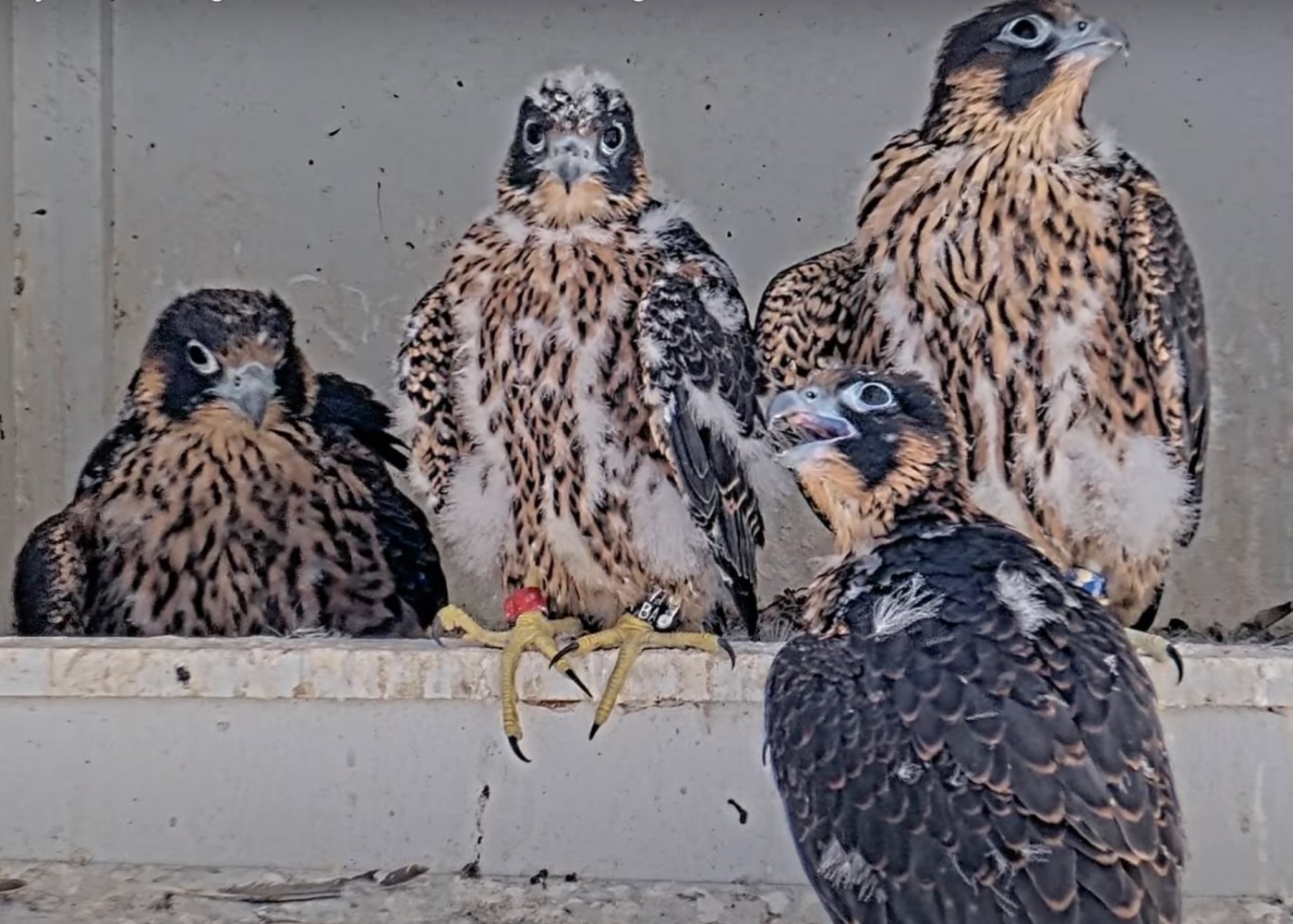
An unusual breakfast for a group of falcon chicks atop San Jose City Hall has researchers and falcon fans worried about a possible poisoning.
On Thursday morning, Hartley, the female of City Hall’s nesting peregrine pair, brought home a rat, and her five-week-old offspring Willow, Octavia, Emma and Chico feasted on the rodent.
“They were fighting over it,” said Zeka Glucs, director of the UC Santa Cruz Predatory Bird Research Group, which works with the City of San Jose to monitor and study the City Hall falcons.
But peregrines rarely catch rats, raising fears that the rodent had been poisoned and the young falcons may have ingested toxic rat poison.
“For (the rat) to be out and about in the daytime and catching (Hartley’s) attention, it might not be doing great,” Glucs said.
Hartley may have seen in the rat “an easy meal option,” Glucs said, and elected to snatch it and bring it home instead of the birds’ usual downtown San Jose fare of pigeons, starlings and sparrows.
The rat incident was caught on one of the popular “Falcon Cams” on City Hall, sending ripples of concern through the community of people who keep a virtual eye on the birds, and recalling memories of Flaco, a Eurasian eagle owl that escaped the Central Park Zoo in New York City in 2023. After becoming an avian celebrity among birdwatchers. Flaco was believed to have been debilitated by rodenticide when he flew into a window and died last year.
While the anti-coagulant rodenticides that are most dangerous to predatory birds and other wildlife have been under a moratorium for commercial and agricultural users in California since 2020, and banned for consumers in the state since 2014, stockpiles probably remain, and the poisons can be bought in other states and online, Glucs said. “They’re still out there,” she said.
Glucs and her research colleagues are hoping that if the rat had been poisoned, the rodenticide was a legal one, and the young falcons — ready to start flying in about a week — would be less likely to ingest a fatal dose.
“We kind of have to wait and see,” Glucs said, adding that symptoms would show up within a few days to two weeks, if the chicks — the third set of four young from Hartley and her Mate Monty in three years — suffer poison-induced internal bleeding.
Related Articles
If feeding wildlife is bad, why are we feeding birds?
Visiting Alcatraz? These dazzling birds are worth the price of admission
US egg prices fall for the first time in months but remain near record highs
Enough! San Jose woman wants bird to stop tapping at her door
If Trump really wants to reopen Alcatraz, he’ll go up against environmental laws
Peregrine falcons, considered the world’s fastest animal after being clocked at more than 200 mph during dives, suffered devastating population losses from the pesticide DDT, which they consumed via birds that fed on poisoned insects. The raptors’ recovery after DDT was banned in 1972 has been hailed as an environmental success story. They were removed from the federal endangered species list in 1999, the California endangered list in 2006, and in 2023, California de-listed them as a species of concern.
However, since 2023, their populations have declined steadily, and many researchers believe avian influenza — bird flu — is largely to blame, Glucs said. Falcons pick up the virus from birds they eat.
“They’re getting hit from a lot of angles with avian influenza and other contaminants in their bird prey,” Glucs said.
Bird flu appeared in the Bay Area in the winter of 2022 and 2023. At San Jose City Hall, female Shasta died from the virus in 2023, and her mate Sequoia disappeared shortly after.
In January at UC Berkeley, falcon pair Annie — the mother of Sequoia — and her mate Archie vanished from the school’s Campanile clock tower. The timing implicated avian flu, which afflicts birds seasonally in this region from October through March, Glucs said.
Glucs, not a fan of rodenticides, would prefer Bay Area residents with rodent problems take alternative measures.
“I love kill trips, snap traps, things that remove rodents without being eco-toxic,” Glucs said. “An animal could eat that dead rodent and they’d be totally fine. You’re creating food for wildlife by killing the rat.”